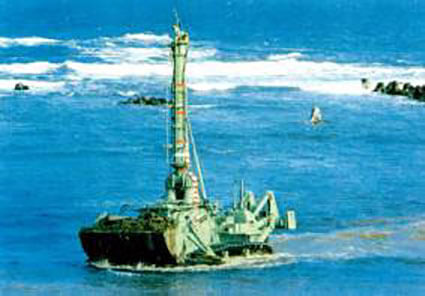1970
Since this era, the focus of domestic demand gradually started shifting from bulldozers to hydraulic shovels. Additional considerations, such as ease of operation, also became an important aspect of design.

Unlike D125W that was fitted with the engine of Cummins, D155W had Komatsu's engine. Its performance including sealability and rust-prevention was improved.
Later it was exported to be used at Donau river, Sakhalin, and, Philippines.
Weight: On land: 43000kg, In water: 27000kg, Up to 7m depth of water
Bulldozer
Since its first emergence in 1951, it took only 50 years for the hydraulic shovel to establish its primary position on construction sites worldwide. Its size ranges from mini to super size depending on the scale of construction, and during the half century, it kept evolving by achieving a minimum rear-swing radius and adapting styles that would work with characteristics of each site. Mirroring the movement of a human hand, a hydraulic shovel will continue to evolve during the 21st century.